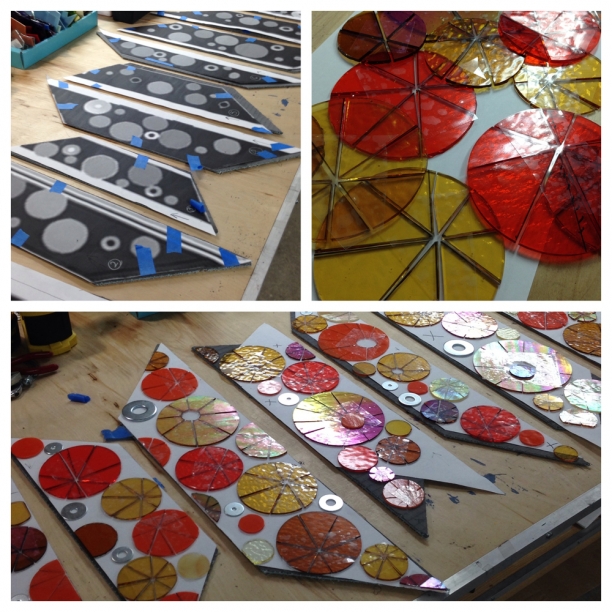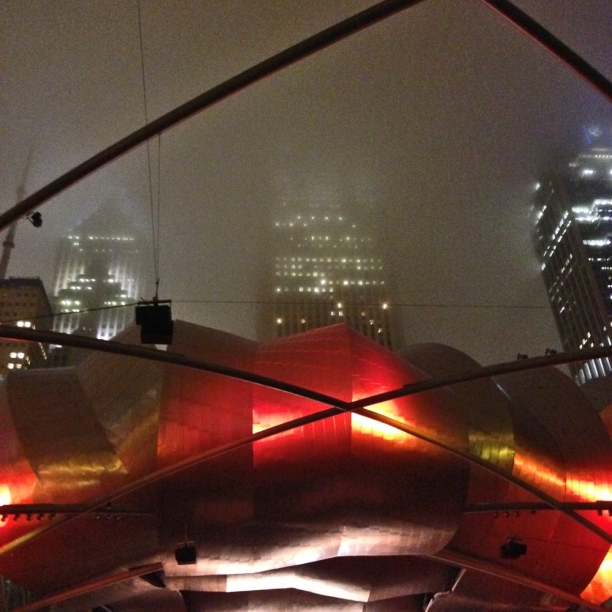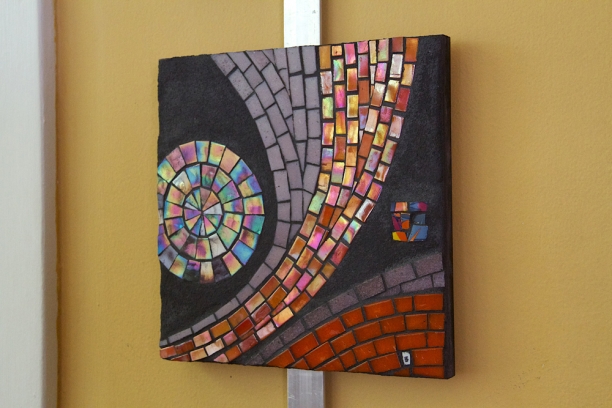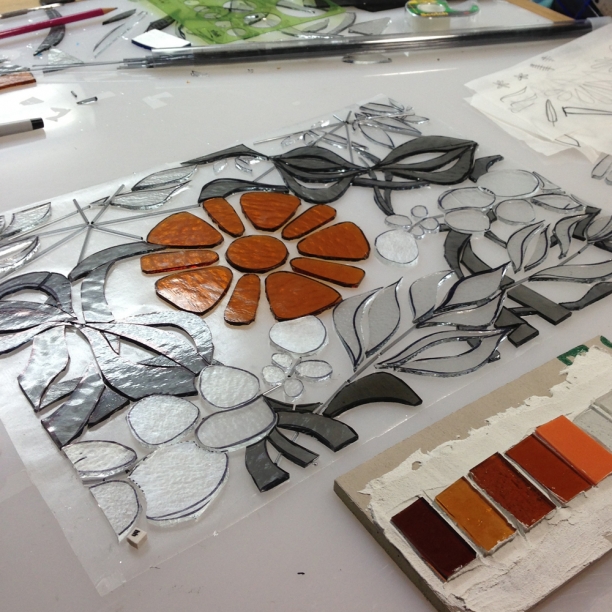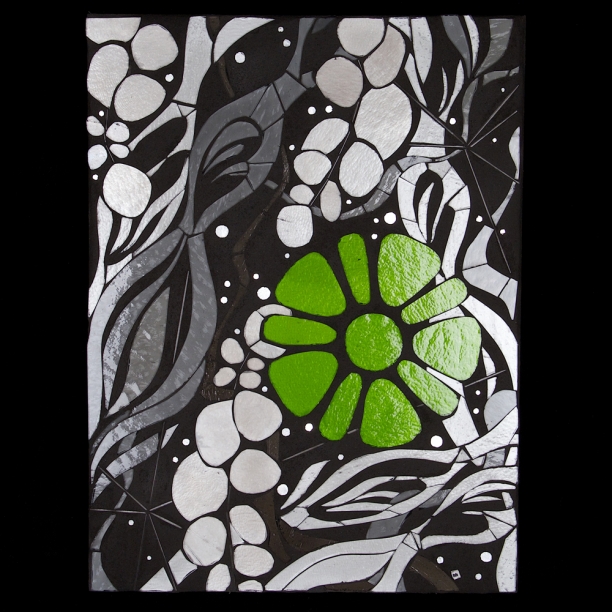I am thrilled to get the chance to think bigger. Link has been selected for installation along the north wall of the Adriatic Cafe at Clark and Bryn Mawr in Chicago, IL. Link comes from my recent work in exploring the points of intersection between the built and natural worlds. Each graphic element, abstractions of both natural (sky, waves, foliage) and built world forms (circuit boards, maps, traffic markings), has a unique geometry and yet is inter-connected with the surrounding elements. Spare, grayscale elements at the far endpoints increase in density, vibrancy and inter-connectedness into the focal point of the mural to create an overall rhythm and sense of resonance. The glass brings energy and vibrancy in popping oranges and ambers and hardware in self-contained interior forms that inter-lock with the linear elements. The elements will float along the existing brick wall, offering a visual narrative to engage pedestrians.

A month ago, artist Sarah Laing forwarded me the RFP issued jointly by the Andersonville Development Corporation and Good News Only. It was a tight timeline and given the budget constraints would necessarily be a painted composition with a small amount of integrated glasswork. Given Sarah's background in public art and painting I asked if she'd be interested in helping me navigate the world of painting on brick. Sarah has trained with several local public artists and has served on the board of the Chicago Public Art Group. Her recent projects include the Main St. Metra station mural in Evanston, a pedestrian underpass mural in West Andersonville and a current piece at Lincoln Elementary School in Evanston.
The exterior brick wall of the Adriatic Cafe is the first of a number of Andersonville sites identified for public art installations. This building is a beautiful 3-story brick buildings with curved corner windows that repeat at similar corners throughout Andersonville. The benches and plantings and generous sidewalk already create an inviting public space alongside the building. The goal is to create an engaging visual experience with coherent changes in form, velocity and intensity across the 30' span.


